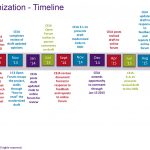Technology, billing, regulations—how do rheumatologists manage the business side of their practices in an ever-changing environment? During this year’s Annual Meeting, a practical, full-day workshop will offer attendees the tools to thrive in today’s healthcare business landscape…
Search results for: patient-centered care

Lessons from Master Clinicians: Listen to Your Patients
Many, if not all, rheumatologists seek to grow as clinicians so they can provide consistently exceptional care to patients and serve as role models for colleagues and trainees. In The Rheumatologist’s Lessons from Master Clinicians series, we present insights from clinicians who have achieved distinction in the field of rheumatology and who are respected by…

Why & How to Pursue Shared Decision Making with Your Patients
Over the past several decades, the medical community has been moving toward a model of shared decision making. In addition to its ethical advantages, shared decision making potentially yields such benefits as improved medical adherence and better health outcomes. With the proliferation of treatment options and changes in the larger culture, shared decision making is…

Patient Satisfaction Scores—Do They Matter?
You see a patient for the first time to establish care for Sjögren’s disease. She complains of dry eyes, dry mouth and diffuse arthralgias. You do not appreciate any synovitis on physical exam. Of note, you are the fourth rheumatologist she has seen during the past year. Toward the end of the clinic visit, she…

Why & How Doctors Should Foster Shared Decision Making with Patients
SAN DIEGO—At the ACR/ARHP 2017 Annual Meeting Nov. 3–8, a session on how to promote shared decision making with patients highlighted the role of the multidisciplinary professional team. And perhaps just as importantly, it noted the importance of providers recognizing their own implicit biases, which can get in the way of shared decision making. Presenters…

Tips for Rheumatologists to Master Quality Measurement in Clinical Practice
WASHINGTON, D.C.—In 2017, rheumatologists will begin to track and report quality data for reimbursement under the the Medicare and CHIP Reauthorization Act of 2015 (MACRA). Panelists shared their tips on how to score more points under MACRA and utilize existing technology at a Nov. 14 session called Implementing Quality Measurement in Your Clinical Practice at…

AMA Updates Code of Medical Ethics
Eight years ago, the American Medical Association’s (AMA) Council on Ethical and Judicial Affairs embarked on a comprehensive review of the AMA Code of Medical Ethics. What emerged after years of hard effort, intensive feedback and thoughtful revisions was a modernized version of the guide, which the AMA House of Delegates voted to adopt in…

Rheumatologist Steven S. Overman Reflects on His Last Day of Practice, Future of Specialty
I am a few weeks post-retirement. Having written thank you notes and completed urgent home projects, I swing in a hammock at our currently fire-threatened cabin north of Winthrop, Wash., and reflect. I feel like a young boy while freely flipping pages of a hand-scribed picture book, The Principles of Uncertainty, by Maira Kalman. She…

Arthritis Power App Can Help Patients Monitor Symptoms, Improve Office Visits
For the past 16 years, the website, creakyjoints.org, founded by arthritis patient Seth Ginsberg and social entrepreneur Louis Tharp, has offered arthritis patients and their families a safe online community where they can receive meaningful support and education. In March, the online portal added a new initiative—Arthritis Power, the first-ever patient-led, patient-generated, app-based research registry…

Meditation May Help Prevent Physician Burnout
Physician burnout is high and climbing. A 2015 report published by Medscape showed that nearly half (46%) of physicians surveyed responded that they were experiencing burnout; that number is up from 39.8% reported in a similar survey in 2013.1 These physicians experience the tell-tale signs of burnout: loss of enthusiasm for work (or emotional exhaustion),…
- « Previous Page
- 1
- …
- 6
- 7
- 8
- 9
- 10
- …
- 19
- Next Page »